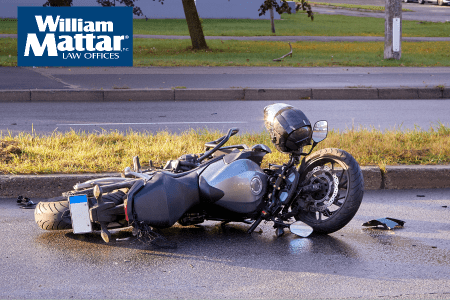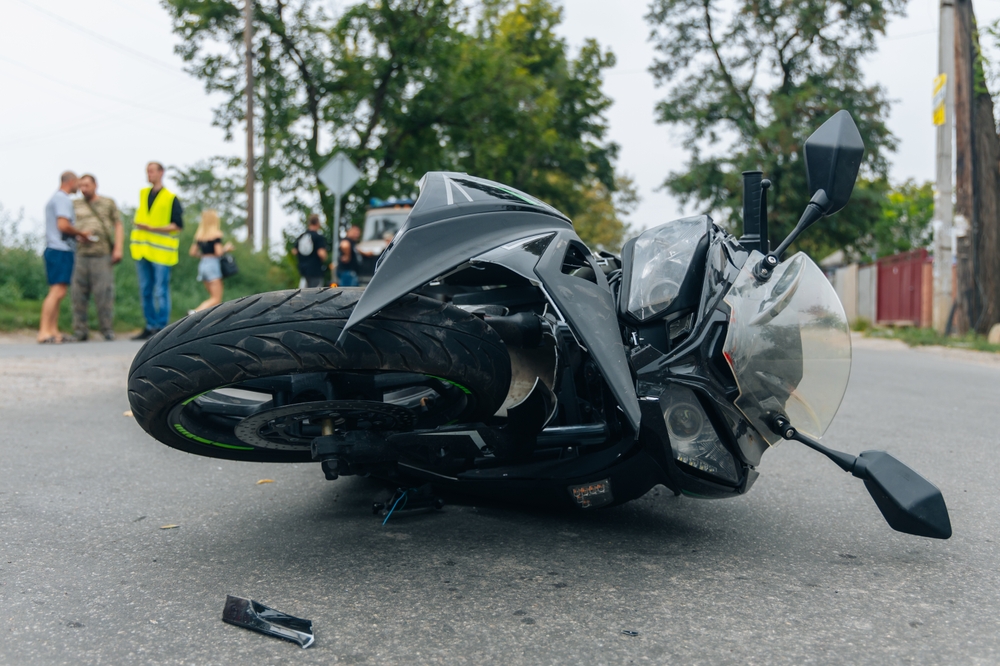

(844) - 444-4444

Picture this: you’re stuck in bumper-to-bumper traffic on a sweltering New York summer day. As you inch forward, a motorcycle glides past, effortlessly navigating the narrow space between lanes. This practice, known as lane-splitting, is a common sight in many parts of the world, but it exists in a legal gray area in the Empire State.
For motorcyclists, lane-splitting represents a tantalizing solution to traffic woes and a way to maximize the maneuverability of their two-wheeled vehicles. Car drivers can find it a startling and sometimes contentious encounter. But what does New York law say about this practice? And what are the implications for road safety and traffic management?
 Lane-splitting, also known as lane-filtering or white-lining, is the practice of a motorcyclist riding between lanes of slow-moving or stopped traffic. This maneuver allows motorcyclists to navigate congested areas more quickly than other vehicles. While common in some parts of the world, lane-splitting remains a contentious issue in many U.S. states, including New York.
Lane-splitting, also known as lane-filtering or white-lining, is the practice of a motorcyclist riding between lanes of slow-moving or stopped traffic. This maneuver allows motorcyclists to navigate congested areas more quickly than other vehicles. While common in some parts of the world, lane-splitting remains a contentious issue in many U.S. states, including New York.
As of 2024, lane-splitting is not legally permitted in New York State. The New York Vehicle and Traffic Law does not explicitly mention lane-splitting but requires vehicles to stay within a single lane unless making a legal lane change. Lane-splitting is illegal, as New York law defines motorcycles as vehicles for this purpose.
While some states, like California, legalized lane-splitting under certain conditions, New York has not. Motorcyclists who engage in lane-splitting in New York may face traffic citations and potential liability for an accident.
According to the New York Vehicle & Traffic Law (“VTL”), lane-splitting activities are unlawful on New York roads. VTL 1252, entitled “Operating motorcycles on roadways laned for traffic,” states that:
Thus, generally speaking, New York motorcyclists cannot drive between designated traffic lanes or adjacent lines or rows of vehicles. However, the law does grant motorcyclists certain privileges, such as the right to ride two abreast in a single lane.
Lane-splitting often generates passionate discussions among road users, safety experts, and policymakers. Let’s examine some of the arguments for and against the practice:
Potential Benefits of Lane-Splitting:
Concerns and Potential Risks:

Determining liability is crucial for insurance claims and potential legal proceedings after a New York motorcycle crash. However, establishing fault can become significantly more complex when lane-splitting is involved. Here’s why
Since lane-splitting is currently illegal in New York, a motorcyclist engaging in this practice may be presumed to be at fault in the event of an accident. However, this doesn’t necessarily mean the motorcyclist must pay for all damages, as other factors may have contributed to the collision.
Lane-splitting accidents often involve multiple vehicles, making it challenging to determine each party’s level of responsibility. For instance, if a car changes lanes without signaling while a motorcycle is lane-splitting, both parties may share some degree of fault.
Unlike states where lane-splitting is legal and has established guidelines, New York lacks official standards for safe lane-splitting practices. This absence of clear rules can make it more challenging to determine what constitutes negligent behavior in these situations.
Insurance companies may take firm stances against covering accidents involving illegal activities like lane-splitting, potentially leaving motorcyclists vulnerable to significant financial liability.
Eyewitness accounts can be crucial but often contradictory in lane-splitting accidents. Different perspectives on the incident can further complicate the process of determining fault.
Motorcyclists may worry about their role in an accident, especially if they believe they might have been partly at fault. New York follows a “pure comparative negligence” rule for personal injury claims, including motorcycle accidents. This means that even if you’re partially at fault for your accident, you may still be able to recover damages from other at-fault parties. However, your compensation will be reduced by the percentage of your fault.
Key Points to Consider:
The bottom line: Even if you were lane-splitting or committing another traffic violation at the time of the accident, you may still be entitled to compensation if other factors contributed to the crash. Consult a motorcycle accident lawyer to discuss your legal options.

Lane-splitting remains a complex and controversial topic in New York and across the United States. While it’s currently illegal in New York, the debate surrounding its potential benefits and risks continues. As a motorcyclist or driver in New York, it’s crucial to stay informed about current laws, prioritize safety, and respect all road users.
Remember that traffic laws and road conditions can change, and it’s always best to err on the side of caution. Whether you’re riding a motorcycle or driving another vehicle, your primary focus should be on arriving at your destination safely.
If you’ve been involved in a motorcycle accident in New York, regardless of whether lane-splitting was a factor, it’s essential to understand your rights and options. The complexities of motorcycle accident cases, including determining fault and navigating insurance claims, can be overwhelming. That’s where the experienced team at William Mattar Law Offices can help.
Our attorneys are focused on personal injury law and have extensive experience handling motorcycle accident cases throughout New York State. We understand the unique challenges motorcyclists face on the road and in the legal system. Whether you’re dealing with injuries, property damage, or insurance disputes, we’re here to advocate for your rights and help you seek the compensation you deserve.
Don’t let confusion about lane-splitting laws or other traffic regulations prevent you from seeking the legal support you need after a motorcycle accident. Contact a personal injury lawyer at William Mattar Law Offices today at (716) 444-4444 or through our online form for a free consultation. Our dedicated team is ready to listen to your story, answer your questions, and guide you through the legal process.





